Filmosophy: Being Charlie Kaufman
16 October 2017
Is Charlie Kaufman a philosopher? Many believe so. His films are increasingly screened in...
Niles Atallah (NA): The approach of the film took shape as I investigated Orllie-Antoine’s story and waded through the historical archives. It was shaped as I confronted the unknowns in the historical record.
The events surrounding Orllie-Antoine's life took place over a century ago, this is a very long time for human memory and we forget things pretty quickly. It can be a challenge to reconstruct a chain of events from just a few years ago if we are basing our knowledge on testimonies, letters and found objects. Even speaking to members of the same family about a certain event or person can be confusing. People tend to remember things differently and memory itself is not a stable thing. It is volatile and constantly changing. Who did what and when? Why did they do it? What were they trying to do when they did? These things become muddled very fast: motivations, desires, reasoning. Especially in the 19th century, before film and audio recordings, before the mass availability of photography. How is it possible to reconstruct the events in a person’s life with precision when everybody who knew this person has died? From letters, from archival documents… from objects? Can we trust this evidence? Were the events recorded faithfully? How can we be certain that events weren’t distorted by the person who recorded them?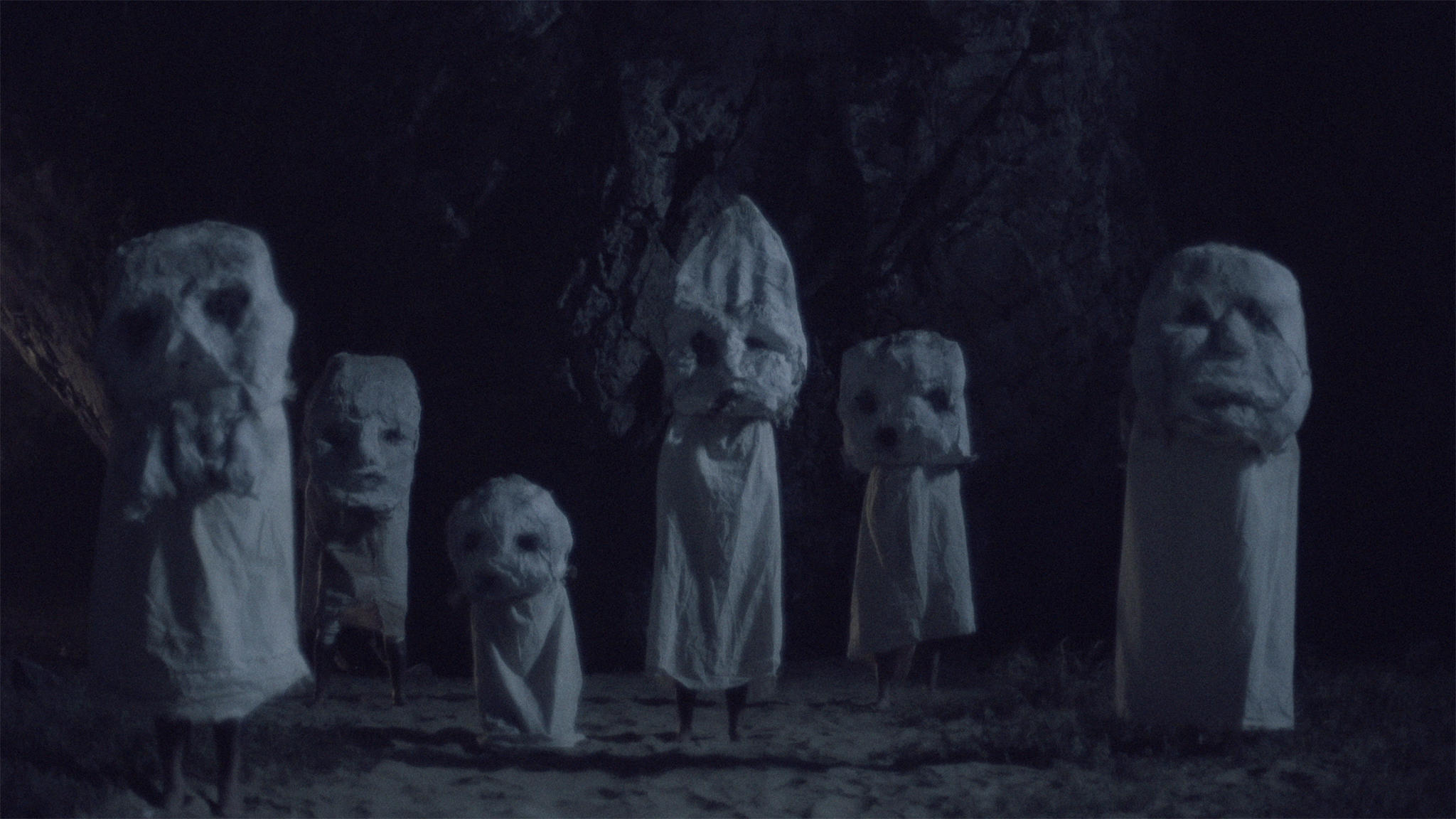 Even if we could fill an entire building with the archives of a person's life this would still only be a tiny speck in comparison to the reality of that person's life. There is an assumption in historical reconstruction and in biographies and period dramas that by building a coherent narrative from found archives of a person's life we can get a good sense of who they were and what they did. I think this is rather naive. The experiences of one person's life, the inner emotional and spiritual world that exists within a human being, is infinitely more complex and varied than any narrative reconstruction. We can never really know who people were. Of course we can make all of the assumptions we want, but to believe our own assumptions and confuse them with reality...? This is just plain foolish.
Even if we could fill an entire building with the archives of a person's life this would still only be a tiny speck in comparison to the reality of that person's life. There is an assumption in historical reconstruction and in biographies and period dramas that by building a coherent narrative from found archives of a person's life we can get a good sense of who they were and what they did. I think this is rather naive. The experiences of one person's life, the inner emotional and spiritual world that exists within a human being, is infinitely more complex and varied than any narrative reconstruction. We can never really know who people were. Of course we can make all of the assumptions we want, but to believe our own assumptions and confuse them with reality...? This is just plain foolish.
I decided I would create my own archives and to consciously fill in some of these holes, knowing that my own archives would be fictional and imprecise. They would be imaginary manifestations onto celluloid of the king’s life. I would create my own film archives where film did not exist. Therefore, I filmed the actor in the early stages of development, before I started writing the script. I buried this 16mm film in the earth and periodically unburied it, projected it and digitized it in different stages of decomposition. As I watched these images of the king decay I wrote the script and the film slowly took form. Through the film we can experience these “memories” of the king as if they were our own. They are a reflection of his inner life. The spectator of the film witnesses the decay of these memories, physically through the deterioration of the film emulsion itself, and narratively through the way the memories transform over the course of the film.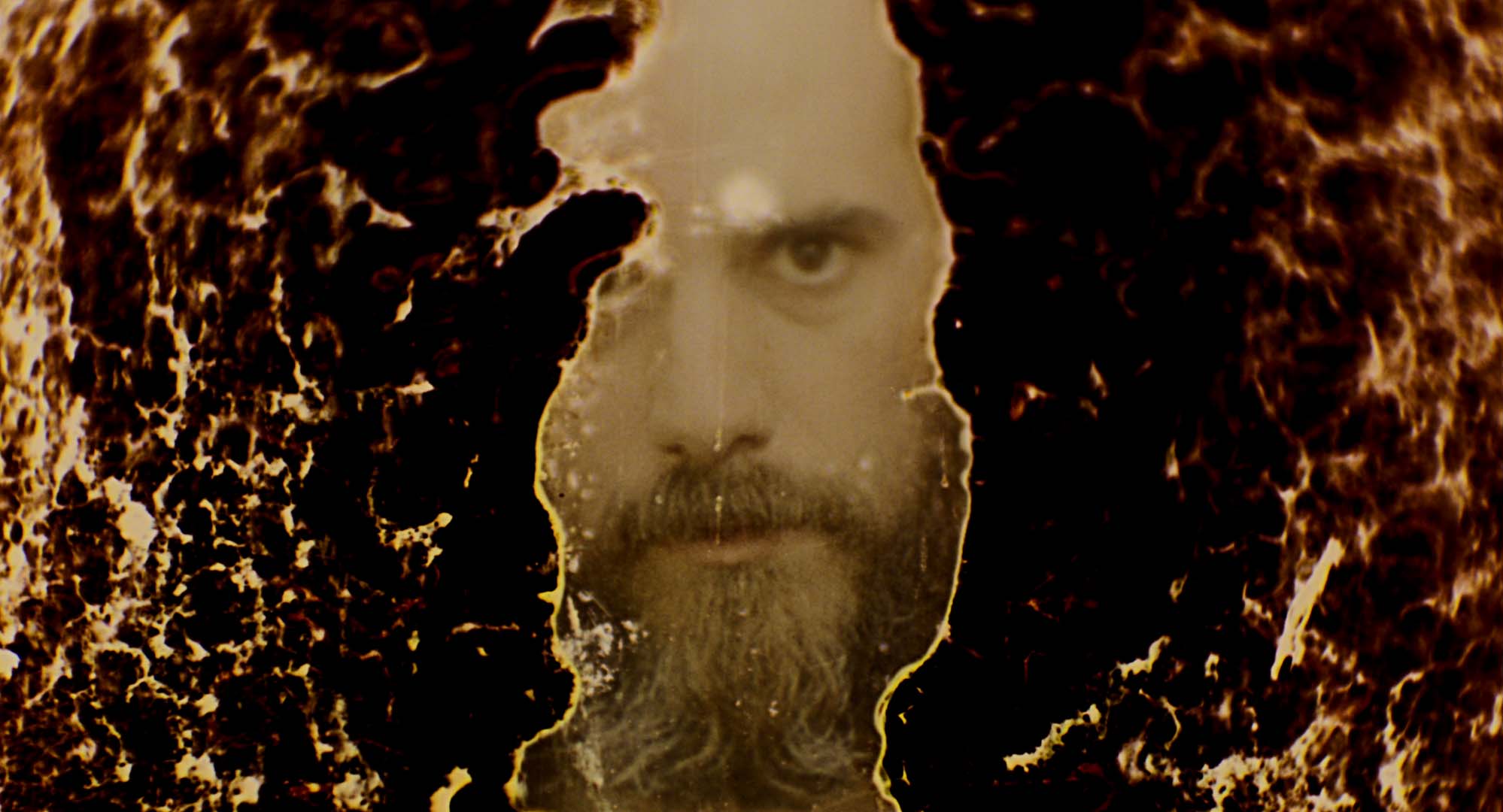 Aesthetically, Rey does not propose an external reality that can be empirically reconstructed. The film proposes a space where the external and the rational cannot be separated from everything else. The rational co-inhabits the same space as the irrational, the fantastical, the absurd.
Aesthetically, Rey does not propose an external reality that can be empirically reconstructed. The film proposes a space where the external and the rational cannot be separated from everything else. The rational co-inhabits the same space as the irrational, the fantastical, the absurd.
I have engaged with the making of Rey as I have any film I’ve worked on: as a process of discovery that does not remain within the limits of argument and rational thought. In the film, things can co-exist in spaces that seem radically opposite. This is a natural space for artistic practice. I think art is a field of play, a practice that traditionally pertained to magic or religion, but unlike religion it does not pronounce dogmas. It opens itself out into more and more questions.
NA: I shot on 16mm and super 8mm in the development phase when I first began burying images of the actor. This was between 2011 and 2014. In 2015 we then filmed for 5 and a half weeks, Benjamin Echazarreta was the photographer and we used the Sony Alpha A7s for most night scenes and the RED Epic camera for the rest. We then transferred, in an artisanal way, all of this digital material to film by shooting it again from a screen on 16mm and 35mm film, which I then buried, unearthed, scanned again, and so on and so forth. The editing was in parallel with this filmic process of turning the entire film into a collection of archives. As far as the shooting itself and the work with the actor Rodrigo Lisboa, a Chilean actor (who does not speak French), I focused on varying aspects of Orllie-Antoine and spoke about this to Rodrigo. I delved into this character and investigated him at length over the years, imagining different ways to manifest his presence on screen.
As far as the shooting itself and the work with the actor Rodrigo Lisboa, a Chilean actor (who does not speak French), I focused on varying aspects of Orllie-Antoine and spoke about this to Rodrigo. I delved into this character and investigated him at length over the years, imagining different ways to manifest his presence on screen.
Orllie-Antoine de Tounens sparked my curiosity when I first came across his story, initially because of its eccentric nature. It really had a fairy tale aspect that intrigued me: a French provincial lawyer who dreamed of becoming a king in a far away land. To me it was very complex, simultaneously absurd, exciting, heroic and pathetic. I empathized with this man’s dedication to his dream and yet I was repulsed by his drive for power and the desire to rule over others. Unfortunately, his was a Colonial dream, a utopian fantasy of power that transformed into a nightmare. I saw his story as that of a man who chases a failed dream, a chimera, like a carrot on a string.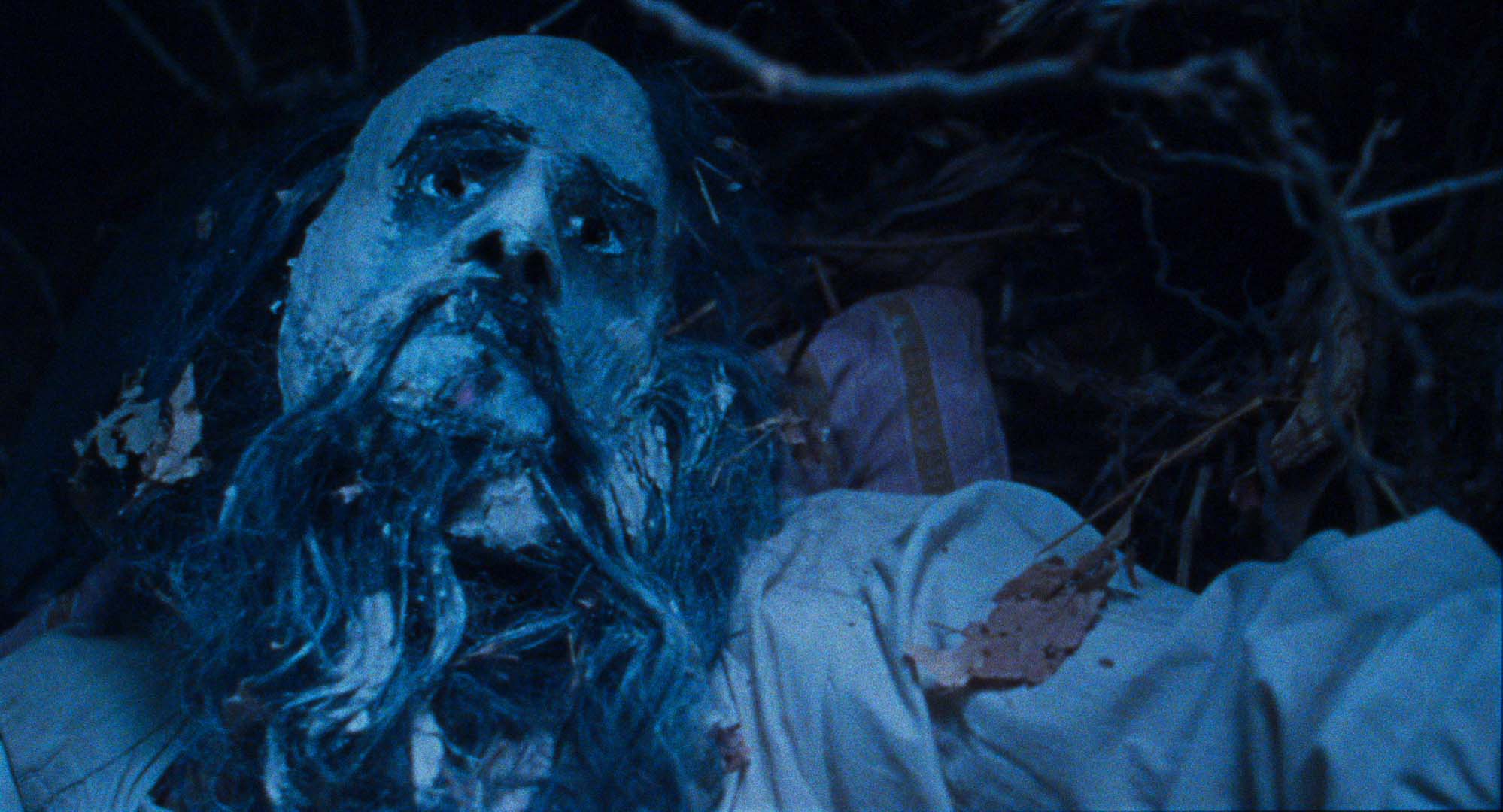 What was intriguing to me were the lengths he was willing to go. The pursuit of his dream became totally insane, consuming the rest of his life. But it is precisely at this edge of sanity that his quest transcends a conventional lust for power and dominion. It is his dedication to his dream, his unfailing perseverance against all odds, against all rational voices of his time, that expose him, not as a political leader but as a kind of poet. His actions are taken to such an extreme that they become poetic actions, actions that represent the energy of his time and set him apart from other colonialists. He does in fact become a king, but not of lands and peoples, his kingdom remains a chimera, like that of any artist. These are castles made of sand. And maybe the tragedy of his life was that he never realized this but continued to strive for political conquest.
What was intriguing to me were the lengths he was willing to go. The pursuit of his dream became totally insane, consuming the rest of his life. But it is precisely at this edge of sanity that his quest transcends a conventional lust for power and dominion. It is his dedication to his dream, his unfailing perseverance against all odds, against all rational voices of his time, that expose him, not as a political leader but as a kind of poet. His actions are taken to such an extreme that they become poetic actions, actions that represent the energy of his time and set him apart from other colonialists. He does in fact become a king, but not of lands and peoples, his kingdom remains a chimera, like that of any artist. These are castles made of sand. And maybe the tragedy of his life was that he never realized this but continued to strive for political conquest.
NA: The masks are present for a variety of factors and I hesitate to reveal concrete "meanings" behind things in the film. I prefer to speak more generally about the process and how the film germinated from my confrontation with the character and the investigations I did over the years. These investigations went beyond Orllie-Antoine himself and historical narratives surrounding his life. I investigated early film archives to see what moving images remain from when cinema was born. This was very illuminating and I called into question historical reconstruction itself. The fetishistic nature of historical reconstruction and collecting. The collecting of objects, archives, documents, things that are then arranged into certain ways in order to create a "definitive" narrative out of reality. There is a kind of objectification that occurs, in the sense that the ephemeral nature of reality is converted into objects. People are converted into things or into icons, into representations of ideas. They cease to be human, they become puppets or statues in a wax museum. And the process of historical reconstruction then invites us to believe these fictional objects, these substitutes of the dead, as if they were real flesh and bone, and an appropriate surrogate to living things. I wanted to provoke this feeling in the spectator, that we are not watching something real but something that is staged, something that is artificially reconstructed. I wanted this feeling of arbitrariness and absurdity to enter the reconstruction so as to undermine the legitimacy of it. How can we believe something when we know it has been made by somebody else? When we can see the threads and seams behind the costumes. This is the opposite of the quest for "authenticity" that we see in period dramas (or "costume dramas"). Here the costumes are absurd, clearly fake. To me this is very Dadaist, a game. It is game of representations, a hall of mirrors that invites us to doubt what we see, and how we see.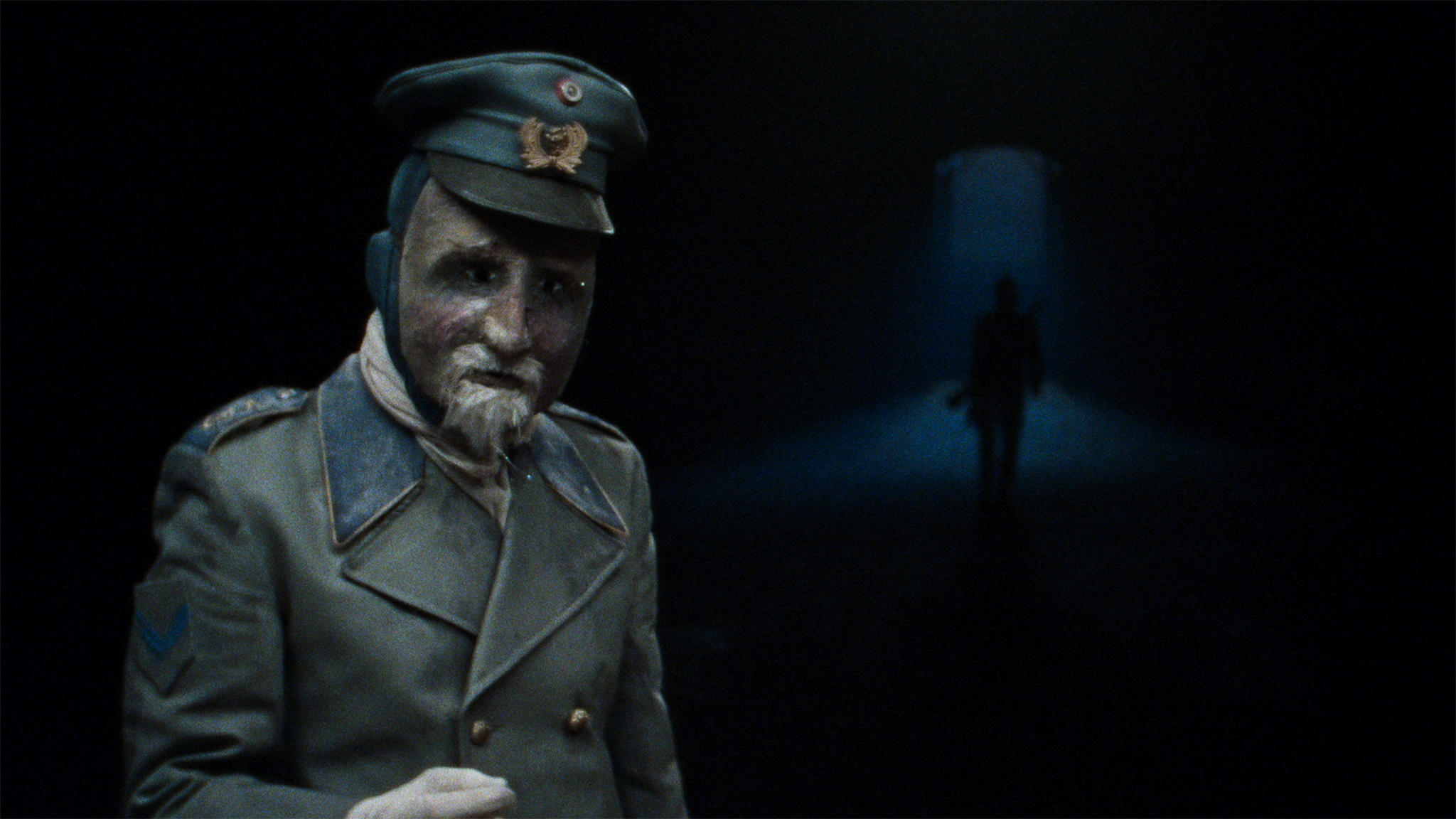 In Rey the whole idea of reconstructing the story of history and Tounens is a futile exercise. I tried taking another approach altogether. Rather than “reconstructing” the events that we see in the film I decided to explore the multiplicity of versions. Through confronting Orllie-Antoine’s many faces I feel that a doorway is opened in the film that can lead the spectator beyond the initial desire to know “who he was” and realize this to be an illusion. We can never really know who anybody was. To my mind Orllie-Antoine remains a total mystery, even after years of investigation. Sufficient information survives about his life to suggest all kinds of things. But the historical record is full of holes and inevitably leads us towards the fabrication of narratives.
In Rey the whole idea of reconstructing the story of history and Tounens is a futile exercise. I tried taking another approach altogether. Rather than “reconstructing” the events that we see in the film I decided to explore the multiplicity of versions. Through confronting Orllie-Antoine’s many faces I feel that a doorway is opened in the film that can lead the spectator beyond the initial desire to know “who he was” and realize this to be an illusion. We can never really know who anybody was. To my mind Orllie-Antoine remains a total mystery, even after years of investigation. Sufficient information survives about his life to suggest all kinds of things. But the historical record is full of holes and inevitably leads us towards the fabrication of narratives.
NA: I was really inspired by a mix of films that I saw as a child in combination with more dense so-called "arthouse" films. I'm very intrigued by the crossing of aesthetic tones, representational forms and narrative voices. Much of this is actually inspired from the films I watch as a boy. The cinema I grew up on was basically mainstream Hollywood movies. I had very little knowledge that any other kinds of films existed. As a child I lived mainly in small towns, some of them without cinemas. There were video stores where I could rent VHS tapes and these rental shops had a very limited selection. It wasn’t until I was around 19 or 20 that I really encountered another world of cinema and submerged myself into it completely. Julie Andrews in The Sound of Music
Julie Andrews in The Sound of Music
I continue to love a great variety of films: I have a special love for musicals like The Wizard of Oz, The Sound of Music, Charlie and the Chocolate Factory, Mary Poppins, Jesus Christ Superstar, etc. I was marked very strongly as a child by mainstream Hollywood films of the 1980s: The Never-Ending Story, E.T., Back to the Future, Star Wars and Labyrinth. Also, the Spaghetti Westerns of Sergio Leone, especially The Good, The Bad, and the Ugly. These were the films I was raised on and they touched me deeply as a child. I believe that it is as children that cinema has its main potency, its maximum capacity to transform us. And these films in particular follow potent mythological patterns. They probably are not very concerned with challenging our conception of the form or the narrative structure of cinema- they are not poetic works in the sense of “high art”- but they are myths that function on a subterranean level behind contemporary masks, and they use narrative patterns that continue to be repeated, generation after generation, charged with energy.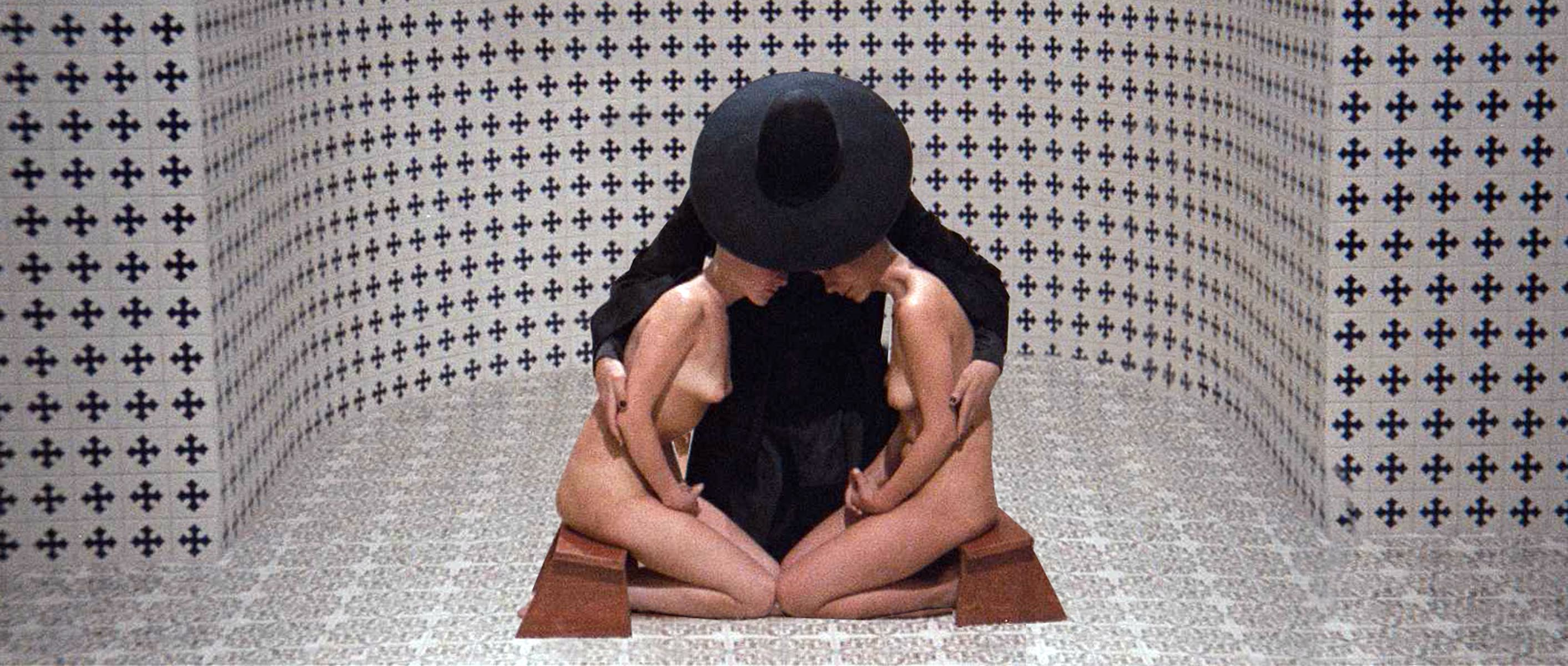 Alejandro Jodorowsky's Holy Mountain
Alejandro Jodorowsky's Holy Mountain
Of course, when I encountered the films of Kubrick, Ozu, Cassavettes, Fellini, Herzog, Tarkovsky, Pedro Costa, José Luis Guerin, Victor Erice, Jodorowsky, Buñuel, Luis Ospina, Chantal Akerman, and many others I stepped into a different world, one that pushed the margins of cinematographic language. But it is the mix of the mythological, infantile cinema from my childhood, and this margin pushing cinema of the auteurs that has really inspired me. I’m not interested in “Art Films” in particular. To me, many so-called “Art Films” belong to just another genre that hides beneath an unnecessary sobriety and supposed profundity of thought. There is a gravity and density that is characteristic of “adulthood” or “maturity” that I find tiring and pompous. Many so called “Art Films” that are making the rounds in festivals lack a playfulness and daring that really only occurs when filmmakers step out of their comfort zone or the invisible accepted norms of what is Art with a capital “A”. Many of these films follow patterns that are just as repeated and overused as conventional mainstream films. Personally, I find no positive aspect to limiting the sources of inspiration or the boundaries of exploration in filmmaking.
Have a look at what's on to book a screening or event.
Still adding?
If you don’t want to view your Watch list right now, you can access your list anytime from your profile.